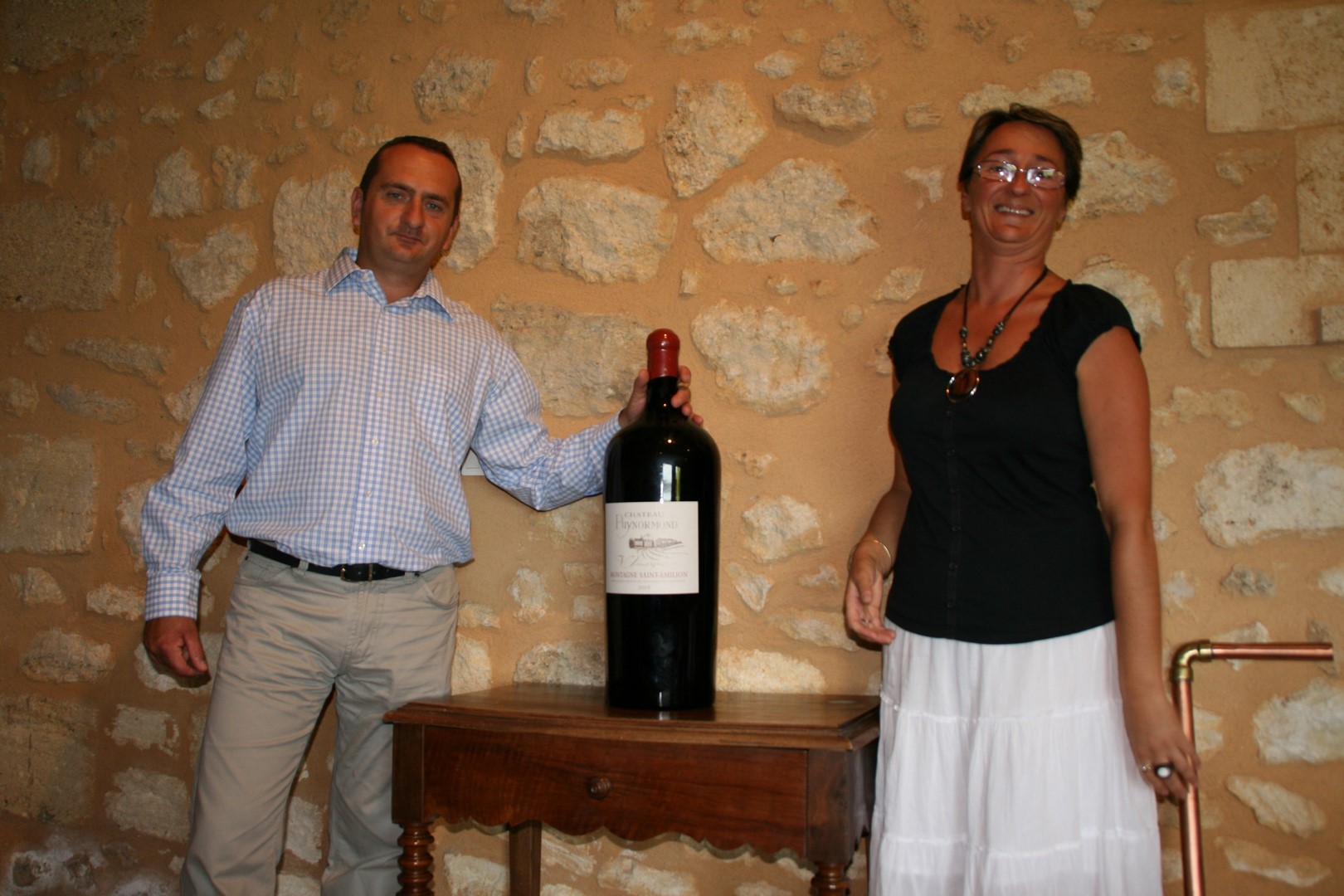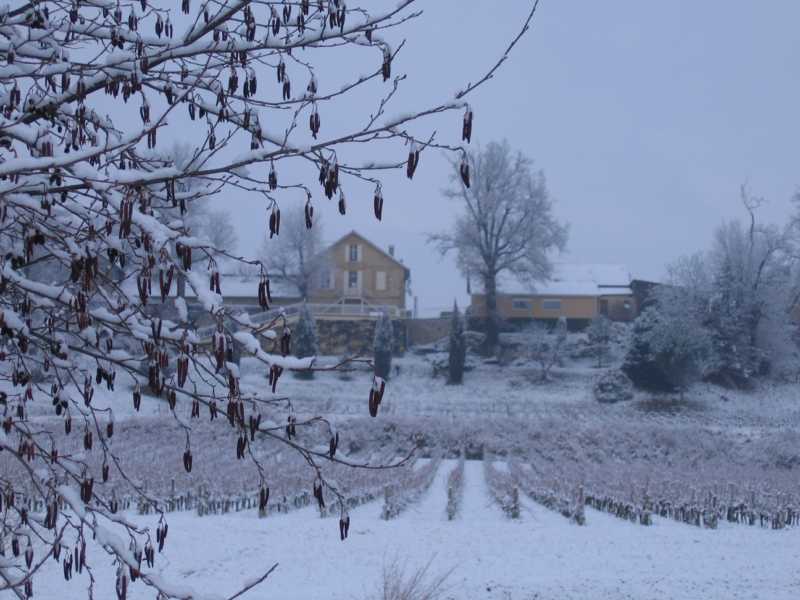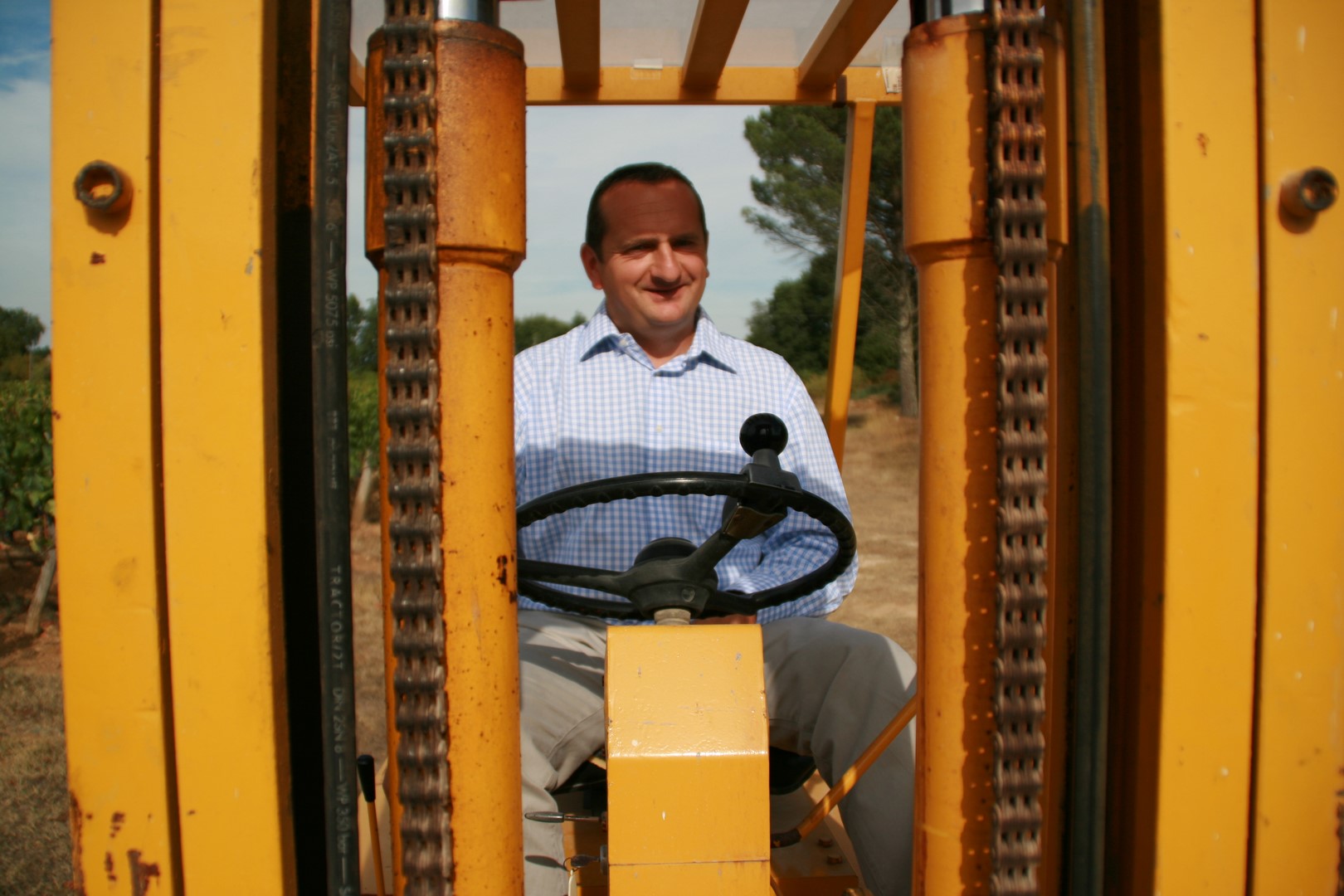Family property since 1923
It is on a topographic statement from 1785 ordered by King Louis XVI to Pierre De Belleym, that we found the first trace of Domaine de Puimarmon. It is only after the revolution that the name PuynormOnd appears.
The old owner and builder of Château Puynormond only wanted André Massoudre (my grandfather) as successor. He knew that the man was honest and a hard-worker. A story of friendship and a story of men in a stone setting!
A this time we are in 1923, my great grandfather is an ancient “poilu” of the 1st world war and with no money at all. He will have to borrow a t a 100% to cultivate “his vines” on this rocky hillock. After a life of hard work it was my grandmother’s turn and then my parents’. They developed the name of Puynormond across the whole country. t a 100% to cultivate “his vines” on this rocky hillock. After a life of hard work it was my grandmother’s turn and then my parents’. They developed the name of Puynormond across the whole country.
In June 2000 arrives the 4th generation: Catherine Barat and Philippe Lamarque. In this beginning of the XXI century, our first interest was to combine quality of the wines with the respect of traditions. The cultural methods were completely modified and with the arrival of our new oenologist M-H Schaaper, the level of our raw was pulled toward the top. All of these efforts allow us today to be sold all around France, as well as in Europe, North America, and recently in China.
|
|
Saint-Emilion production wine
We are situated of the commune of Montagne, between our prestigious neighbors; Saint-Emilion and Pomerol. The residence of Château Puynormond, overlooks an amphitheater of vines from a clayey raw. Merlot represents 90% of the planted grape varieties and Cabernet-Franc 10%.
I like the blending of those two grape varieties because the Merlot brings the fruit, some color and makes the wine flesh. The Cabernet Franc adds some complexity as well as a floral nose, the mouth is full of tannins but with a velvet finish. The weather of our region is strongly influenced by the Atlantic Ocean; which gives us beautiful back seasons, favorable to a good maturity of the berries. I decided to manage the vineyard with supervised control in order to respect the fauna, and that way we started working the soil again. The first tool is not the vine but its terroir, and you need to make it live, breath and increase its microbial life. For a better quality of our grapes, we thin out the leaves manually and practice green harvests.

|
|
WINTER
November-January : Dormancy
When the vine enters in winter rest or dormancy, it’s capable to support very low temperatures, down to 1.4°F (-17°C). A long and cold winter facilitates a good budburst as well as it sanitizes the base of the vine.
November-March : Winter pruning
When the sap doesn’t run trough anymore, the viticulturist prunes his vines with pruning shears. He chooses the fruiting cane and adjusts it depending on the wanted free-run. Certain amounts of bud, called “eyes” are left on each foot. The vine has to be pruned severely so that it doesn’t exhaust its reserves while feeding too much shoots. The pruned ones are burned or crushed in the vineyard.
|
|

See more |
|


|
|
|
SPRING
March-April : bleeding of the vines and budburst
The temperature is rising slowly, the soil is starting to warm up, and the vines are waking up shyly. A little bit of sad is coming out of the shoots; this bleeding is the sign that the roots system is slowly starting back its activity.
In March-April the buds swell up, ready to open a few weeks later; it’s called the budburst. Watch out of the first spring freeze that could ruin the fruit and the future harvest. The young sprout will then develop themselves into new twigs, which will continue their growth until July.
May-June : The flowering and the berry set
The inflorescences which come out in spring were actually conceived the past year in the sleeping buds. The vine, biennial plant, develops itself during two years. Discreet but delicately perfumed, the vine flowers form tiny bunches placed at the opposite of the leaves. The flowering is follow by the berry set, when the fruit is formed after the fertilization. Bad climatic conditions, like too much rain or very low temperatures can cause a flower abortion or millerandage (when the berries stay small).
The disbudding :
When all risks of freeze are out of the way, the buds situated at the base of the twig (called base-bud) are eliminated.
|
|
SUMMER
July-August : Hardening on the vine wood and veraison
The twigs have finished their growth now, they are starting to become brown and cover up with a bark; called the hardening of the vine wood, which will last until October. Now we don’t talk of twigs anymore but of shoots. All the energy of the vine concentrates in the development of the berries. The veraison is when the color of the berry skin changes. It is the beginning of the ripening period. The small, hard and green balls gain in transparence and color.
Epamprage (thining out the young new growth on vines) :
We take out the non-productive shoot from the vine-stock : the water-shoot.
Le levage (raising the branches) :
Trough the growth, the winemaker holds up and attaches the shoots to the trellising wires.
Topping and trimming :
We take out some shoots and leaves, done mechanically.
Thin out the leaves :
The East side of the vine (rising sun) is done in June and July. The leaves situated around the grape have to be pulled out by hand in order to ventilate the grape and to naturally reduce the risk of illness. This practice is a natural way of reducing the treatments. And moreover we raise the quality of our grapes by this exposition to the sun. Reduction of the veraison, concentration of the color and tannins.
|
|
In September, when the sun is less blazing, we thin out the leaves on the west side of the vines. The berries can enjoy fully the afternoon sunlight during the end of autumn, usually very nice in the Bordelais, due to the oceanic climate that we have.
The green harvests :
Before or after the veraison, it consists in cutting the grapes to lower the free-run yield. We leave a maximum of ten grapes per feet. We eliminate the non well-formed gapes as well as the ones that are too tight against each other in order to avoid any rotting development.
 |
 |
|
End August to October : maturity
In the grape the amount of sugar rises regularly whereas the acidity decreases. When the berries have obtained an optimal composition, it is time to harvest. Once the growth is over the vine reconstitute some reserves; the sap goes back towards the roots and in the woods of the trunk, the arms and the shoots. The leaves turn yellow and start to fall.
The harvests :
We start them usually 100 days after the flowering. The date is fixed according to the maturity of the grape and functions of the type of wine that we want to elaborate.
|






 t a 100% to cultivate “his vines” on this rocky hillock. After a life of hard work it was my grandmother’s turn and then my parents’. They developed the name of Puynormond across the whole country.
t a 100% to cultivate “his vines” on this rocky hillock. After a life of hard work it was my grandmother’s turn and then my parents’. They developed the name of Puynormond across the whole country.



